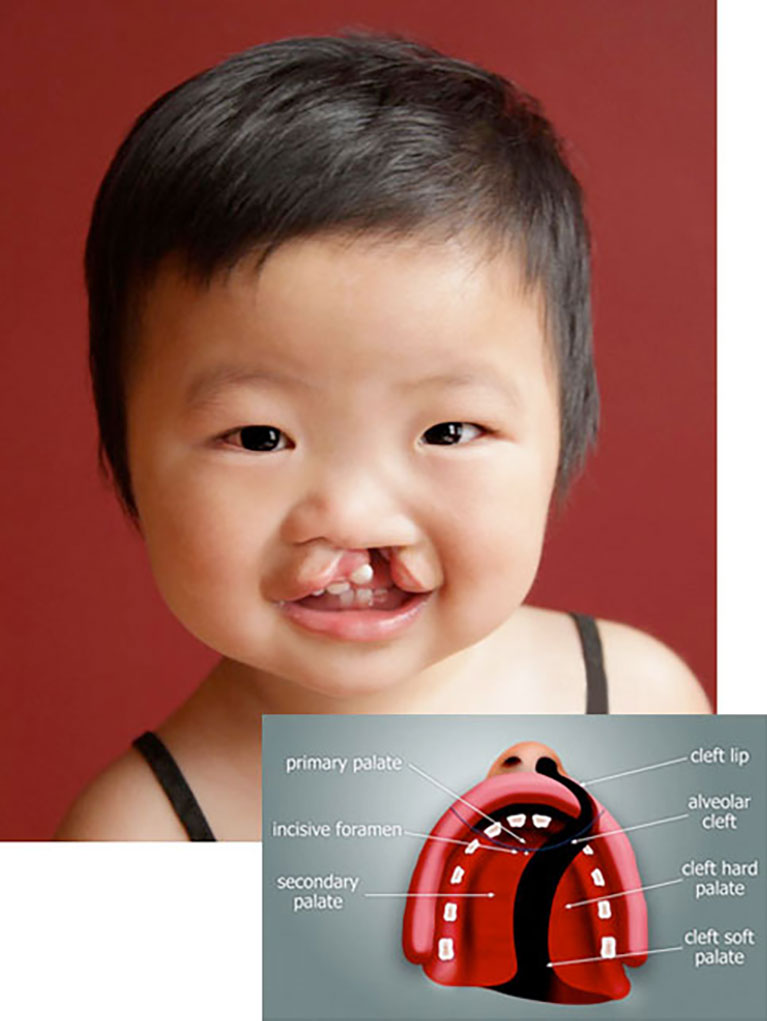
Cleft Lip and Palate

What is Cleft Lip and Palate?
Cleft lip and palate is one of the most common birth anomalies in the world.
Cleft lip and palate is a congenital condition which happens in the first three months of pregnancy. It affects the upper lip and the hard and soft palate of the mouth. A cleft occurs when the parts which make up the lip and palate fail to fuse properly.
Cleft lip and palateThe type and severity of a cleft will vary from child to child.
A child is born with cleft lip and palate approximately every two and a half minutes somewhere in the world, according to the US Census Bureau.
Despite extensive research about cleft lip and palate, its causes are still unknown.
The condition can affect a child’s appearance, speech, teeth, eating, hearing and ability to develop socially.
Cleft lip and palate can be successfully treated using a comprehensive team approach.
Our partners provide local, multidisciplinary care so that children can be socially accepted into their community and lead a productive life.
In developing nations, multidisciplinary cleft lip and palate treatment is often lacking.
We aim to close this gap in cleft care.
Cleft Lip and Palate Care
Beyond a Single Surgery

Newborn Care

Surgery to repair a cleft lip

Surgery to repair a cleft palate

Alveolar bone graft for upper jaw clefts

